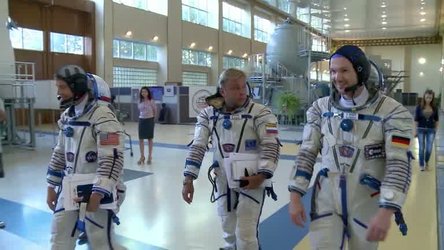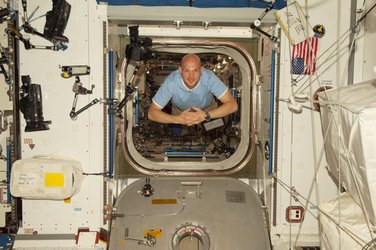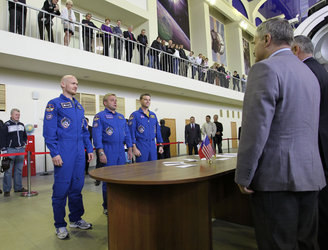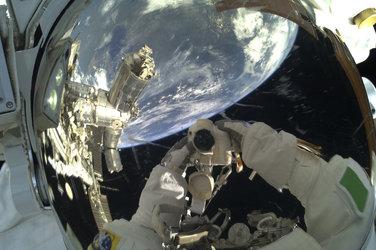Getting to space
Breaking free of Earth’s surface is no easy feat. Humans dreamed of travelling to the stars for centuries, but it was Yuri Gagarin became the first human to orbit Earth, on 12 April 1961.

Leaving from the same launch facility as Yuri Gagarin, in Baikonur, Kazakhstan, Expedition 40 will sat atop 274 tonnes of rocket propellants. Flight checks last for hours as the technicians, astronauts and ground control get everything ready for launch.
When ignited, the Soyuz launcher delivers mind-boggling power to escape the clutches of Earth’s gravity and provide a cruising speed of 28 800 km/h.
Within 10 minutes, Alexander, Maxim and Reid travelled over 1640 km and gained 210 km altitude. Every second for nine minutes, their spacecraft accelerated 50 km/h on average.
Alexander, Maxim and Reid left Earth on 28 May in a spacecraft that is still a close relative to the Soyuz spacecraft used in the 1960s.

The ‘TMA’ in the designation stands for Transport Modified Anthropometric, meaning that the interior was redesigned to fit taller and larger astronauts. Regardless of the upgrade, there is little breathing room. Astronauts wear Sokol suits that offer limited protection in an emergency. They are designed to be worn only for sitting in the Soyuz, which is why astronauts look so hunched over as they walk to their spacecraft.
The 'M’ in Soyuz TMA-13M stands for Modernised after the spacecraft was upgraded to use digital instruments. It was the 13th in this series to be launched.
Using a different numbering system, the flight is also designated as Soyuz 39S because it was the 39th crewed Soyuz launch to the Station.
Fast road to space
Expedition 40 took the fast route to the Station, docking with the laboratory in less than six hours. The same-day arrival gave Alexander and the Expedition 40 crew two extra full days on the Station to perform experiments. They not only spent less time cramped in Soyuz but, most importantly, it saved fuel and life support for their six-month Expedition.

An alternative, more traditional approach takes two days to reach the Station while orbiting Earth 34 times. This route was superseded in March 2013 when Expedition 35 were the first to get to the Space Station in record time.
The longer route is always available as backup if ground control or the astronauts consider it safer. Alexander’s predecessors, Expedition 39 cosmonauts Alexander Skvortsov, Oleg Artemyev and NASA astronaut Steven Swanson took the two-day option after an engine failed to ignite at exactly the right time after launch.
The Soyuz spacecraft has a small module ahead of the main capsule that serves as living quarters while en route to its destination. Naturally, a toilet is included.















 Germany
Germany
 Austria
Austria
 Belgium
Belgium
 Denmark
Denmark
 Spain
Spain
 Estonia
Estonia
 Finland
Finland
 France
France
 Greece
Greece
 Hungary
Hungary
 Ireland
Ireland
 Italy
Italy
 Luxembourg
Luxembourg
 Norway
Norway
 The Netherlands
The Netherlands
 Poland
Poland
 Portugal
Portugal
 Czechia
Czechia
 Romania
Romania
 United Kingdom
United Kingdom
 Slovenia
Slovenia
 Sweden
Sweden
 Switzerland
Switzerland


















































